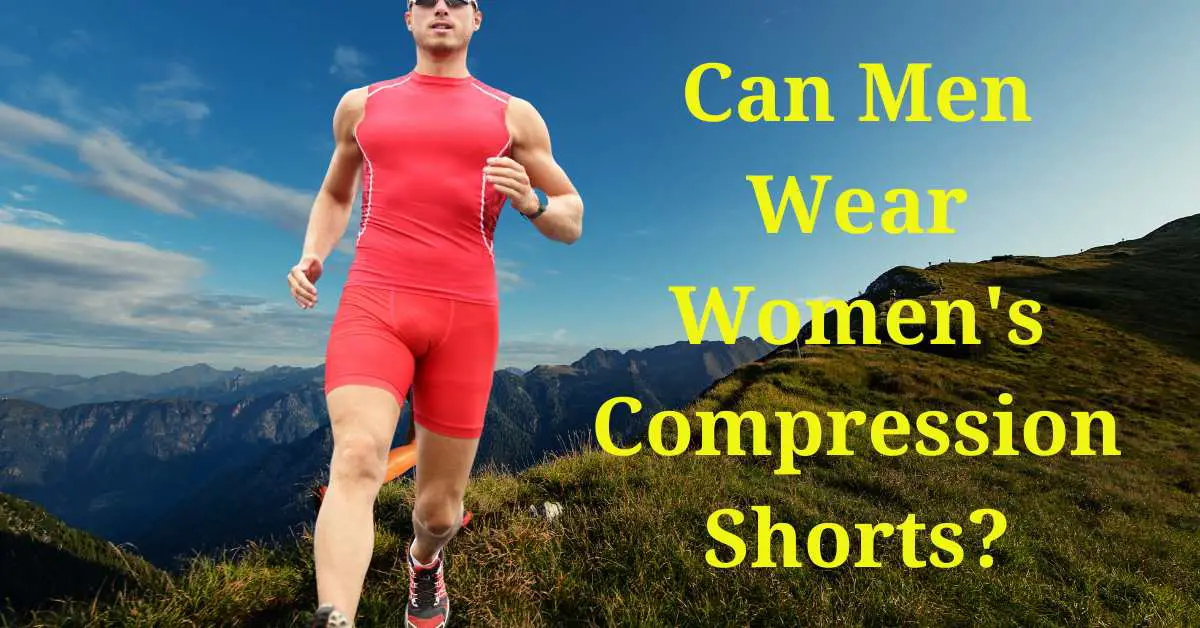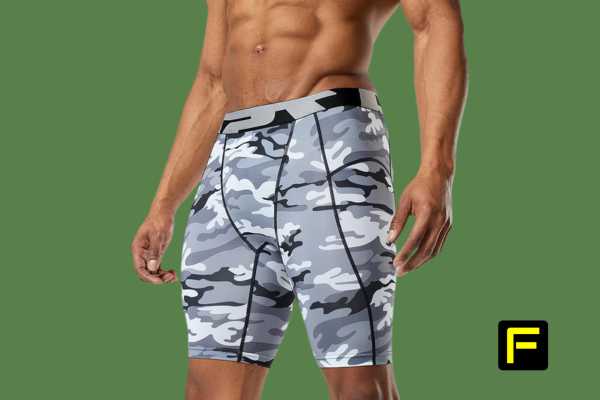Can Men Wear Women’s Compression Shorts? Compression shorts are a staple in athletic and fitness wear. They are known for their tight fit that is meant to support and compress muscles during physical activities. Typically, these shorts are designed with specific gender considerations in mind, influencing aspects like fit, cut, and comfort features.
But does that mean men cannot wear women’s compression shorts? The reality is that while nothing physically prevents men from wearing women’s compression shorts, the design differences can impact the fit and effectiveness.
When selecting compression shorts, it’s important to consider the intended use and the designs that cater to the needs of your body.
Women’s compression shorts are tailored to the female form, which often means they are contoured differently than men’s. While men can put them on, they may not provide the same level of support or coverage as those designed for their body type.
Men might also find that women’s sizing does not align with their needs, which could lead to discomfort or inadequate compression during workouts or sports.
Can Men Wear Women’s Compression Shorts?
Key Takeaways
- Men can wear women’s compression shorts, but design differences can affect fit and effectiveness.
- Women’s compression shorts may not provide optimal support for the male body during physical activities.
- Proper sizing and fit are crucial for comfort and functionality when choosing compression shorts.
Understanding Compression Shorts
Compression shorts are specialized garments designed to support your muscles during physical activities. Below, you’ll find details on their purpose, distinctive design features catering to different genders, and the materials used for optimal performance.
Purpose and Benefits
The key function of compression shorts is to provide support and reduce muscle fatigue during exercise. They achieve this by applying balanced pressure to your muscles, which can improve blood circulation. This enhancement in circulation is believed to assist with faster muscle recovery post-exercise and may reduce the risk of injury.
Design Differences Between Men’s and Women’s Compression Shorts
Men’s and women’s compression shorts differ in their cut and fit to accommodate different body shapes.
Men’s compression shorts often have a longer inseam and are constructed to support the male groin area. Women’s shorts typically showcase a shorter inseam and a wider waistband to fit the natural curve of the hips.
It’s important to choose the right design for your body to ensure maximum comfort and effectiveness.
Material and Fabric Considerations
When choosing compression shorts, consider a fabric that combines stretchability with breathability.
Most are made with a blend of nylon and spandex or polyester and spandex. These materials provide a snug fit while allowing the skin to breathe.
For durability and hygiene, look for fabrics that feature moisture-wicking properties to keep you dry and comfortable during intense workouts.
Fashion and Social Aspects
When considering if you can wear women’s compression shorts, it’s essential to understand the role of cultural expectations and the evolving landscape of gender-neutral fashion.
Cultural Norms and Fashion Trends
In many societies, clothing has traditionally been gender-specific, which includes athletic wear like compression shorts.
Men wearing women’s compression shorts may challenge these cultural norms, leading to varied reactions depending on the social environment. However, trends are ever-changing, and what is seen as unconventional today might become widely accepted tomorrow.
Gender Neutral Clothing Movement
The gender-neutral clothing movement is gaining traction, advocating for the idea that you should feel free to wear what suits your comfort and performance needs, regardless of gender labels.
This movement supports the notion that clothing, including compression shorts, can be worn by anyone, and it encourages fashion that caters to personal preference and functionality above traditional gender norms.
Practical Considerations for Men Wearing Women’s Compression Shorts
When considering women’s compression shorts, you should focus on sizing and fit, comfort and performance, and the range of options available. This will ensure the best experience.
Sizing and Fit
Finding the right size is crucial because men’s and women’s bodies differ significantly in their proportions.
For men, hip-to-waist ratio and length are important measurements when selecting women’s compression shorts. Women’s shorts are often designed for a narrower waist and wider hips, which can affect fit for men.
You may need to try a larger size than usual to accommodate for these differences, ensuring the compression shorts are snug but not overly tight.
Comfort and Performance
Comfort is key for performance. Properly fitted compression gear should feel like a second skin, offering support without restricting movement.
It’s also designed to increase blood flow and reduce muscle oscillation, which can aid in muscle recovery and performance.
When wearing women’s compression shorts, make sure they don’t pinch or bunch as this could be a sign of an improper fit, potentially hindering your workout effectiveness.
Availability and Selection
There’s a wide selection of women’s compression shorts in the market, often with more color and style choices than men’s options.
However, be mindful that fashion-focused features should not override functionality and fit for your sporting needs. Availability can fluctuate, so when you find a pair that works well for you, consider purchasing multiple for consistent usage.
Athletic Use and Activities
When considering men wearing women’s compression shorts, it’s vital to understand how these garments can adapt to various sports and the science behind compression wear during physical activity.
Sports and Workout Compatibility
You’ll find that women’s compression shorts are often suitable for the same range of athletic pursuits as men’s.
Whether you’re hitting the track for sprints or engaging in a heavy lifting session, the primary concern is fit rather than gender.
If women’s compression shorts fit your body snugly without restricting movement, you can wear them for your workouts.
For example, runners may wear compression shorts for a more secure feel, while individuals in colder climates might layer them under loose-fitting shorts or pants for additional warmth.
Compression Technology in Sports
The key to compression wear, regardless of gender, lies in its ability to promote blood flow and oxygenation of muscle tissue.
This scientific approach can contribute to improved performance and comfort during short bursts of exercise.
When you wear compression shorts properly fitted to your body, they can provide the benefits of enhanced performance you’re looking for in your athletic activities, thanks to the compression technology they incorporate.
Remember, it’s not about the gender label, but how well the technology works with your body.
Health and Safety Considerations
When looking into wearing compression shorts, your primary focus should be on health and safety considerations to ensure proper circulation and muscle support while also being alert to any potential risks or discomforts.
Circulation and Muscle Support
Compression shorts are designed to enhance blood flow, which may help in reducing muscle fatigue and speeding up recovery after exercise.
For maximum benefits, ensure that the compression shorts you select provide snug, yet comfortable pressure which supports your muscles without hindering your circulation.
Potential Risks and Discomforts
Wearing the wrong size or gender-specific compression gear could lead to discomfort or even health issues.
Men’s and women’s compression shorts are tailored differently to fit their respective body shapes; hence, wearing women’s compression shorts can cause constriction in the wrong areas, leading to discomfort or chafing.
Make sure to choose the right fit to avoid restricting blood flow or causing nerve compression.
Purchasing Advice
When looking for compression shorts, it’s important to consider fit, comfort, and the specific design features suited to your needs.
Where to Buy
You can find a range of compression shorts at sporting goods stores, online retailers, or directly from manufacturers’ websites.
When purchasing, consider visiting specialized stores or websites that cater to athletic wear, such as Runner’s World, which often has a broad selection and knowledgeable staff.
How to Choose the Right Pair
- Fit: Look for a snug, yet comfortable fit that does not restrict movement. Men’s and women’s compression shorts differ mainly in cut and sizing, with women’s shorts typically having a shorter inseam.
- Material: Choose moisture-wicking fabrics to help keep you dry and comfortable during workouts.
- Design: Pay attention to any additional features like flat-lock seams to reduce chafing or mesh panels for extra breathability.
Frequently Asked Questions
When it comes to compression wear, choosing the right fit and understanding the differences between men’s and women’s options can influence comfort and effectiveness. Here are some specific questions to guide you.
What should a man consider before wearing women’s compression shorts?
Before opting for women’s compression shorts, consider the intended design differences, like the cut and support, which may not be tailored to the male body’s needs.
Are there specific differences in the fit of men’s and women’s compression shorts?
Indeed, women’s compression shorts are designed with the female form in mind, often with a narrower waist and wider hips compared to men’s compression shorts.
How would a man choose the right size when selecting women’s compression shorts?
When selecting women’s compression shorts, a man should carefully check the sizing chart, as women’s sizes do not directly translate to men’s sizes and may require choosing a larger size for a comparable fit.
Can men receive the same benefits from wearing women’s compression shorts as they do from men’s?
Men can receive similar benefits such as muscle support and decreased fatigue, but with potential compromises in fit and comfort if the shorts are not designed for their body type.
Are there certain activities for which men should avoid wearing women’s compression shorts?
Men might want to avoid wearing women’s compression shorts for activities that require extensive support in the male-specific areas. They should also avoid wearing them for activities where a precise fit is crucial for performance.
How can one distinguish whether a pair of compression shorts is designed for men or women?
The design of compression shorts is typically indicated by the product description and sizing chart. These focus on gender-specific cuts and fits.

Rick Huey is a fitness writer who has dedicated his life to living an active lifestyle. With more than 30 years of experience in the fitness industry, Rick is a respected contributor for FitFab50.com, where he shares his wealth of knowledge with a wide audience. His dedication to promoting the benefits of living an active lifestyle has inspired many people to pursue their own fitness journeys with enthusiasm and dedication.

